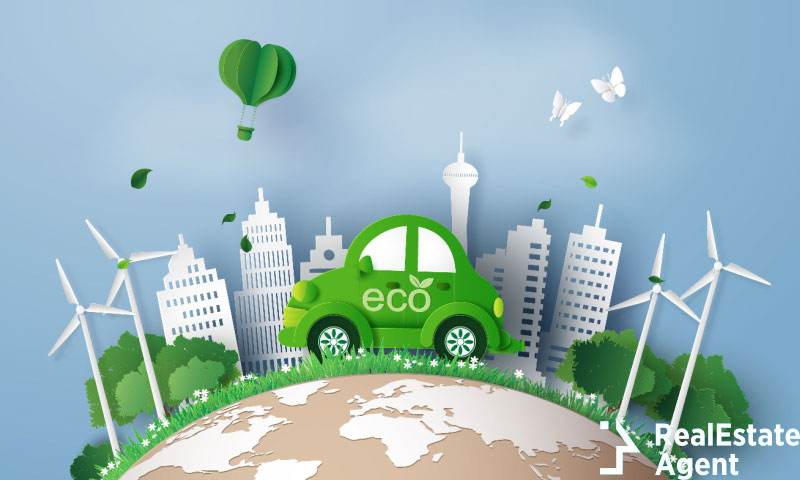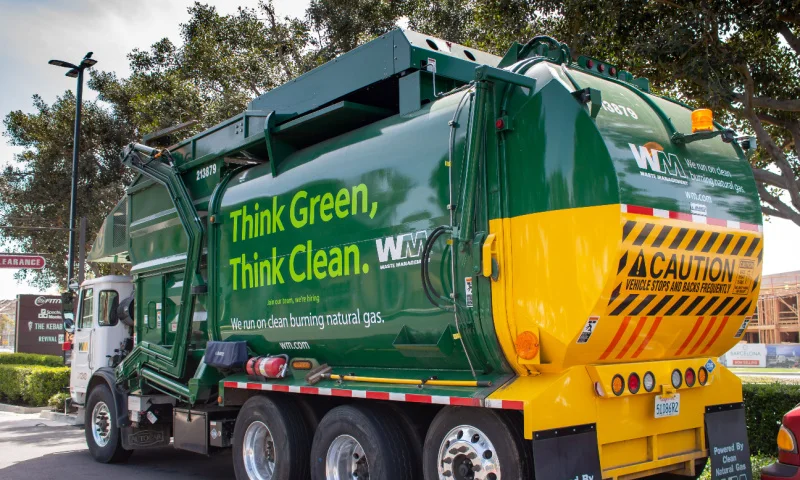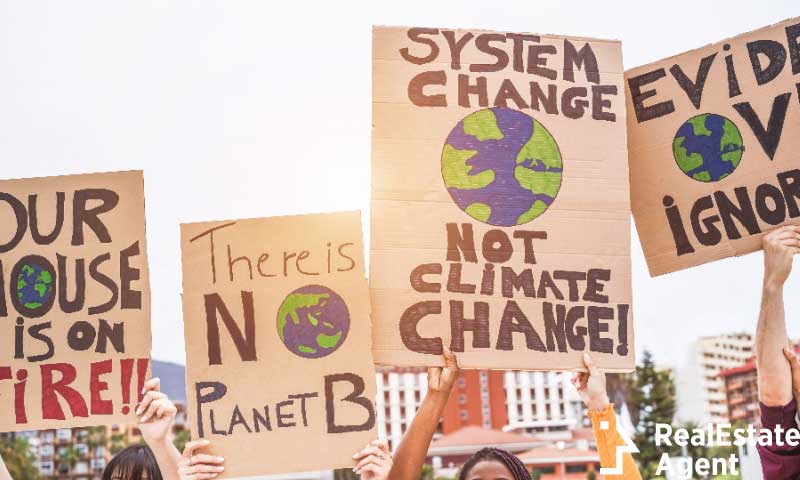Whatever you may think of Greta Thunberg, she hit the nail on the head when she said: “Are we running out of time to save our dear planet”? Or is there still time to implement some fundamental changes? To answer this perplexing question is a true head-scratcher. We would certainly need some Nostradamus-like abilities to predict the future.
Sink your teeth into a sustainable future!
All we can (and are allowed) to say for now is that the desperate fight against climate change has opened a revolutionary new chapter and presented us with a ray of light that gives us hope in conscious environmental planning for a sustainable future. You can achieve this in your own home as well! Call eco-expert local real estate agents to turn your property into an eco-conscious environment and reduce overall monthly energy costs!
Governments worldwide are considering adopting electric car laws permitting only eco-friendly cars. Statutes are designed in such a way as to show zero tolerance for any vehicle with carbon dioxide emissions. Besides, it makes an essential part of the more incredible picture in which they wish to convince people to embrace energy-saving practices.
The US greenlights green electric cars law.
Under the Biden administration, effective regulations have been passed regarding climate spending to boost the market of eco-friendly vehicles. According to Bloomberg, about half of American vehicle (more precisely passenger cars) sales will become electric by 2030. Biden’s consumer incentives to convince Americans to switch to EVs are estimated to reach 374 billion dollars.
Exactly what incentives are we talking about? First and foremost, buyers receive a point-of-sale tax credit of $7,500 for a brand-new electric car acquisition. With this in mind, Bloomberg predicts a 52 percent increase in EV sales in the US market by 2030.
California is among the pioneers of propagating emission-free cars.
The breathtaking Sunshine State of California has always been a frontrunner in revolutionary economic measures and bold political directions. More recently, California regulators officially banned the sale of gas and diesel-powered vehicles by 2035. The directive refers to cars with combustion engines. Details on this policy are yet to be seen.
Zero tolerance by 2035!
In other words, the battle against climate-changing emissions will take gas cars as their victims. The Union of Concerned Scientists worded its concerns: “We can’t address climate change without addressing transportation emissions, which is the largest source of emissions in California.” Therefore, by 2026, 35 percent of new cars sold should be zero-emission. This number must reach 68 percent by 2030. And finally, by 2035, all cars sold in the Golden State should be free of greenhouse gas emissions.
The predominant directives outline those green car manufacturers, such as BMW (i series), Toyota, Daimler AG, Nissan, Ford, and Hyundai, will have to produce more EVs, models, and a large spectrum of models.
Why is California’s initiative so important?
It is quite an impressive undertaking on California’s behalf, don’t you think? Especially if we look at the nation’s most significant auto market producing the highest sales numbers, we hope the new legislation will be enacted. Go California!
Hopefully, more and more US states will follow California’s lead in setting emission standards. The chances for this to happen are real since California’s new vehicle rules currently cover approximately one-third of the eco-friendly car market. On the downside, seventeen states under Republican control challenge the new measures in court.
Even if California manages to pull through and the bill takes effect, Californian folks can still drive their present gas-powered cars and buy them on the used car market. So, you shouldn’t worry that they will outlaw your favorite ‘monster’ on four-heels!
Green cars and nickel mining
Countries worldwide will slowly eliminate the sale of new diesel and petrol cars. Analysts predict that the so-called electric car law 2030 will be generally implemented. This will boost the number of electric vehicles banging on the roads to approximately 145 million worldwide. Green cars will be entirely omission-free at the tailpipe.
One thing is sure; the Evs’ total emissions are inferior to those of their petrol and diesel counterparts. However, we must take into consideration the environmental and humanitarian impacts of their manufacturing as well. More precisely, nickel mining goes hand in hand with manufacturing electric cars for now. And, as you all may know, nickel is polluting and hazardous to our health.
What price must we pay for electric cars?
Transitioning to EVs poses some intriguing questions. Diesel and petrol vehicles have about 2,000 moving parts. On the other hand, an electric car’s motor implies twenty moving parts, making it an exceptional solution for reliability and efficiency.
At current market prices, electric vehicles cost between $30,000 and $40,000. In addition, if you wish to charge your EV battery at home, you’ll be charged a fee between $35 and $135 per month. However, keep in mind that electric cars are more eco-friendly. For this reason, you can save more money on gas and general maintenance expenses in the long run. What’s not to like?
Substantial carbon release for battery production
Nonetheless, we must keep our eyes peeled and investigate electric cars’ production first. The new-generation vehicles were introduced to scale carbon emissions down. And now comes the kicker! About sixty percent more carbon ends up in manufacturing an electric car than a petrol-fuelled one. What’s the explanation for this?
The mining and refining materials, such as lithium and cobalt, indispensable ingredients to batteries, generate a lot of carbon. Did you know that one ton of extracted lithium produces five to fifteen tons of carbon? Thus, indirectly, they increase water and air pollution levels which can be genuine environmental threats for real estate developers.
Battery manufacturing involves the raw materials being shipped across the globe, typically to China, and carbon travels with them. Once the batteries are refined, they will be delivered to car manufacturers. Carbon gets way too much exposure to our planet’s surface. And it definitely affects the production of eco-friendly cars.
Evs raise geopolitical and environmental concerns.
According to the prestigious United States Geological Survey, the Democratic Republic of Congo (DRC) supplies approximately seventy percent of our world’s cobalt mine production. It’s an open secret that miners (many of them underaged) are painfully underpaid so we can fuel our electric cars.
Then, battery production implies a low blow for water supplies. Were you aware that billions of gallons of water are taken away from fragile ecosystems, for instance, at freshwater springs, during lithium refining?
The level of ‘greenness’ depends on the electricity grid that powers vehicles!
Eco-friendly cars sound right; however, there’s a catch. They generate more airborne particles from tire and brake corrosion than their diesel equivalents because their build is more massive.
Eco-friendly cars are as green as the electricity grid they draw their power from. In this regard, EVs function based on the same principle as home aquaponic systems, yet on a larger scale. In Europe, for example, near-zero emission hydroelectricity powers most EVs. Therefore, the CO2 level is substantially reduced. On the other hand, other countries, such as China, do more harm to the environment by gaining electricity from coal-fired stations.
In short, we require clean electricity to power Eco-friendly cars. Otherwise, they won’t deliver zero-carbon emissions. During a 90,000-mile drive, a petrol-fueled vehicle created just about 24 percent more carbon dioxide than an EV of the exact dimensions. This EV is powered by electricity that was generated from natural gas.
Adopt eco-conscious solutions!
We’re currently in the waiting room or phase for technological advancements designed to touch up our battery production. However, wouldn’t seeking cleaner solutions, on a more general level, be a more viable way? And being eco-conscious and environmentally friendly starts at home.
Other forms of non-polluting methods are available, such as active forms of traveling, cycling, and walking. Sharing cars or limiting vehicle journeys will also go a long way. And lastly, we must put the principles of reuse and recycling into practice.
On a micro level, you can manage your day-to-day life according to eco-conscious principles. For instance, you can choose green building materials over harmful ones. That’s how you can build your own sustainable nature house!
Then, you can surround yourself with sustainable gadgets, such as TV sets with reduced power consumption. You can adopt a green mentality even when you present your friends with eco-friendly gifts!
Conclusion
Undoubtedly, eco-friendly cars and electric vehicles deliver a temporary and slightly flawed solution to combat climate change. Yet, most importantly, they can assist us in our efforts to cut down our dependence on fossil fuels. Electronic vehicles are more beneficial for the environment than traditional cars running on diesel.
Still, their manufacturing technique needs refinement. We must also consider where we draw electricity in order to power these beasts.
If we are set on reducing our emissions, we should realize that our modern lifestyle damages the environment. At the present moment, we, in fact, change one solution with a less polluting one. Instead, we ought to request a more eco-conscious public transportation system. Plus, it would be high time to reconsider our relationship with our ‘station wagons.’
By all means, this translates to reducing our dependence on personal transport. However, are we there yet to bring this sacrifice? By the end, we must realize that we’re living on a blue planet and must fight for it by any means possible.
What’s your take on eco-friendly cars and electric car laws? Do you agree with them, or are you instead a nay-sayer? Share your opinion with us in the comment section. Also, if you’ve found this article helpful, give us a big like and share it on your social media!
















